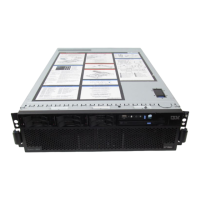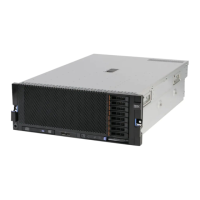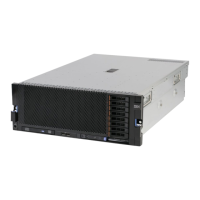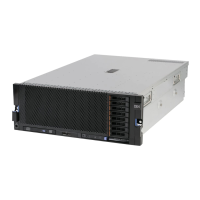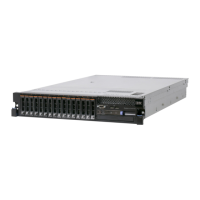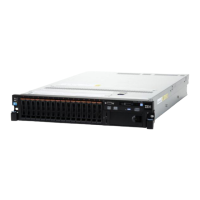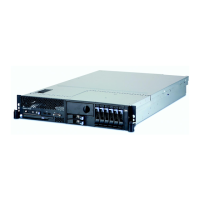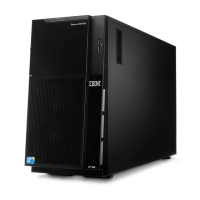Chapter 1. Safety information
Review the documentation that comes with the rack cabinet for safety and cabling
information. Before you install the server in a rack cabinet, review the following
guidelines.
Note: Use the M5 screws that come with the rails to install the server in a rack
cabinet if you plan to transport the rack cabinet to another location with the server
installed or if the rack is in a vibration-prone area.
v Make sure that the room air temperature is below 40°C (104°F).
v Do not block any air vents; usually, 15 cm (6 in.) of air space in the rear and 5
cm (2 in.) in the front provides proper airflow.
v Two or more people are required to install the device in a rack.
v Do not leave any unused space within a rack open. Fillers must be used to
prevent recirculation of warm air.
v Install your server only in a rack that has perforated front and rear doors or in a
rack that is equipped with an IBM
®
Rear Door Heat eXchanger.
v Do not extend more than one device out of the rack at the same time.
v Remove the rack doors and side panels to provide easier access during
installation.
v The EIA flanges must have holes and clearances per EIA-310-D.
v If you have a rack with adjustable depth EIA rails, set the distance between the
rails to no more than 719 mm (28.3 inches) outside to outside in order to allow
space to install the cable management brackets onto the rear of the system.
v Make sure that there is sufficient room in front of the front EIA flange to provide
minimum bezel clearance of 50 mm (1.97 inches).
v Make sure that there is sufficient room behind the rear of the rear EIA flanges to
provide for cable management and routing.
v Rack weight-handling capacity must be sufficient for the aggregate weight of the
server, power distribution units, and power cables.
v The rack must be stabilized with stabilization brackets and leveling pads so that
it does not become unstable when it is fully populated.
Rack Safety Information, Statement 2
© Copyright IBM Corp. 2014 1
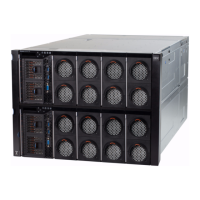
